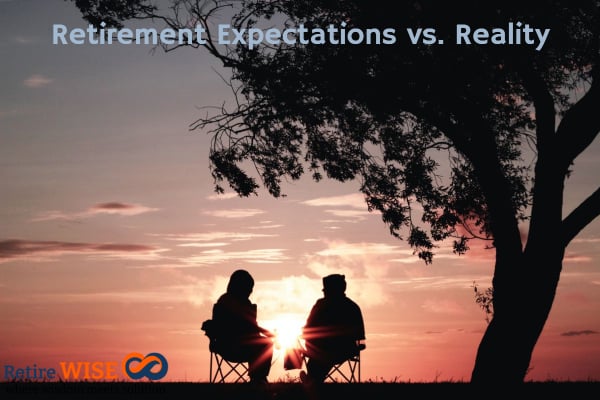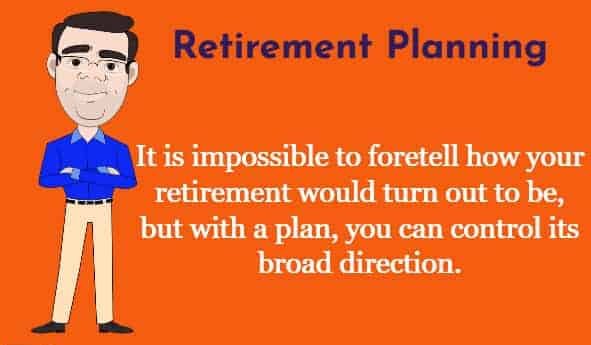If you have crossed your thirties or forties, then sometimes you must have probably found yourself dreaming about post-retirement life. You might have questions like:
- Where will you live – same home/city or somewhere else?
- How much are you going to travel?
- How are you going to spend and enjoy the luxuries?

Whatever dreams or Retirement expectations you have from your retirement, the reality is going to be much different. Everyone will have a different retirement story – with ups and downs.
Read – 8 Facts About Retirement
There are many studies that can help foretell the retired life in general and its financial implications in particular. Though these surveys were carried out in OECD countries, however, middle-class retirees face similar contradictions and dilemmas around the world. So, it is reasonable that some of these findings are applicable to retirees in India as much as they are to western middle-class retirees.
Statistical facts about retirement and retirees- this will you give an idea about Retirement Expectations vs reality
The research by Morningstar shows that as people near their retirement, their estimates for the retirement corpus tend to be very different from what they were when they were younger. At an early age, people tend to underestimate the size of their corpus requirements by 23% to 40%.
The Mercer survey points that most salaried retirees receive between 50 to 55-percent of their last drawn salary as pension – a gap of at least 13% from what they expected to get.
The survey from Pew Research Center estimates that more than three-fourths of the people working today (age group 45-55) expect to continue to work for pay even after retirement. However, the same survey among retirees found that only 12% percent of the retirees are currently working, full-time (5%) or part-time (7%), as most of them were not able to continue a job or did not get one.
Check – Best Retirement Plans in India
The “expected” mean age to retire is 60-64 years in most economies, but in reality, the “actual” mean age of retirement was between 56-60.
The report from MO Deferred Comp on OECD employees found that only 40% of them were able to calculate, the amount of money they would need as retirement corpus and as their post-retirement monthly expenditure. Unfortunately, even among these, 75% of younger employees (age < 35-years) and more than 55% of middle and higher age groups (36-55 years) could not save & invest enough to reach their goal.
All around the OECD countries, the Pew Research Centre report suggests, 35% to 40% of employees were forced into early retirement due to retrenchments or medical reasons.
Almost half of the retirees underestimate their life expectancy by more than 2 years, and a fourth of them by more than 6 years – putting all their calculations in disarray!
More than half of the retirees in OECD countries have their pensions followed by Social Security as their main sources of income. But remember, in India, there is no pension for more than 95% of the workforce and no social security benefits. It means you have to fend for yourself and your dependent spouse!
In order to ease the inflationary pressure, retirees either start working again, or severely reduce their spending to a basic minimum – rent, utilities, medical expenses, food, and essential transport.
How do you plan your retirement?
Living the life.
Retirees expect to enjoy at least the same standard of living as before. Many expect it to be better than earlier, as they would have more time on their hands. But health is one of the main concerns that restricts most seniors from pursuing their interests after retirement. So, keeping yourself in great shape must be on the top of your list if you want to live the life king- or queen-size after retirement.
Wish to leave an inheritance!
Many senior citizens continue to save throughout their retirement – even the retirees not earning anything, save by living frugally. Most retirees also tend to keep their monies in low-interest savings accounts, bank FDs, post-office deposits, and low-yield insurance products.
This has more to do with their life-long habit of saving and living for the future, rather than anything else. Only a few retirees – less than 20-percent – make a conscious effort to save to leave an inheritance for their family.
You may retire sooner than you wish for.
The Transamerica Retirement Survey indicated that a majority of employees above 50-year age assume that they would be working at least until 65-years of age. But the annual survey when done a few years later found that unforeseen events – a layoff, your own health, or the need for full-time care in the family – forced many of them to retire earlier.
Your spending patterns may change.
As you grow older, many familial responsibilities are now things of the past. There would be lesser expenditure on food and clothing but more on outings with family & friends and medical needs. The things that would be your most essential expenditures, will have a higher rate of inflation than those having a lesser priority.
Read – Steps for Happy Retirement
Medical insurance will not cover all your medical needs.
As you age there will be more medical attention that you will need. If you have continued your health insurance then it will cover all major procedures and hospital admissions, but there will be many attendant expenses that are not covered by it. For example, taxi fares each time you see a doctor or buy medicine.
Alternative healing systems and home care are also not admissible by most insurance plans. Plus, most of the health insurance plans have co-pay and deductibles as at the time of buying them we went with a plan with less premium rather than more features!
The longevity risk.
According to World Bank, At the time of independence, the life expectancy in India was around 31 years that has increased to close to 70 years in 2018. As life expectancy increases, your expenditure under every head – medical care, rent or property maintenance, transport, food, utilities, outings, etc. – would stretch your resources substantially. Many retirees have to start looking for work in the middle of their retirement so that can supplement their pensions!
Need for special care.
For some retirees, retirement is synonymous with assisted living and/or needing constant medical supervision. India now offers some great assisted living facilities and retirement communities, where you can move. But these retirement communities also come at a substantial cost.

Read – Retirement Thumb Rules
Retirement Planning
It is impossible to foretell how your retirement would turn out to be, but with a retire plan, you can control its broad direction. There are many myths around retirement, but you do not have to go completely blindfolded into this phase of your life. With open eyes, awareness, and financial planning moving into retirement can be an enjoyable experience rather than a leap of faith.
You must be flexible with your retirement plans to provide for contingencies and an experienced financial advisor and professional can help you with it. The key is to start early and to invest in a portfolio of investment options that are secure, diversified as well as have growth potential.
You can set up investments into different retirement plans such as those from insurance companies, NPS, or buy an annuity. You could also build a portfolio using debt and/or equity mutual funds for more diversification and growth.
A financial advisor works on many variables with you to arrive at a decent retirement corpus and monthly expense figures. These variables – like income-replacement Rate, anticipated retirement age, life expectancy, expected rate of return & inflation, and savings rate – can be intimidating without the handholding from a professional.
So, contact us for any of your retirement worries, bust myths, and creating a plan.
if you any question add into the comment section regarding Retirement Expectation or any other question you have.
























